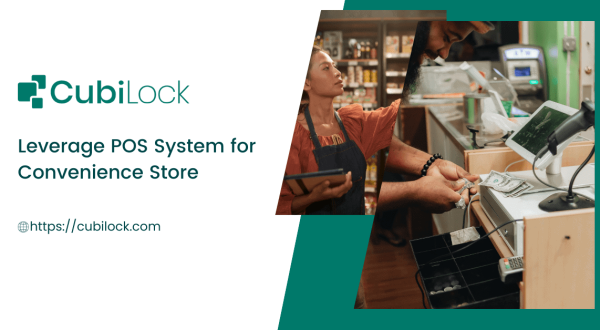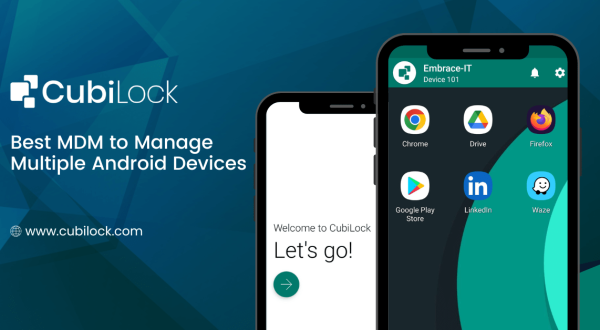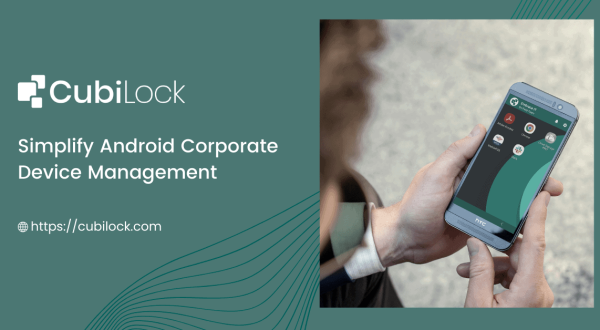Configure Chrome in Single App Mode With URL Whitelisting Feature
- March 17, 2023
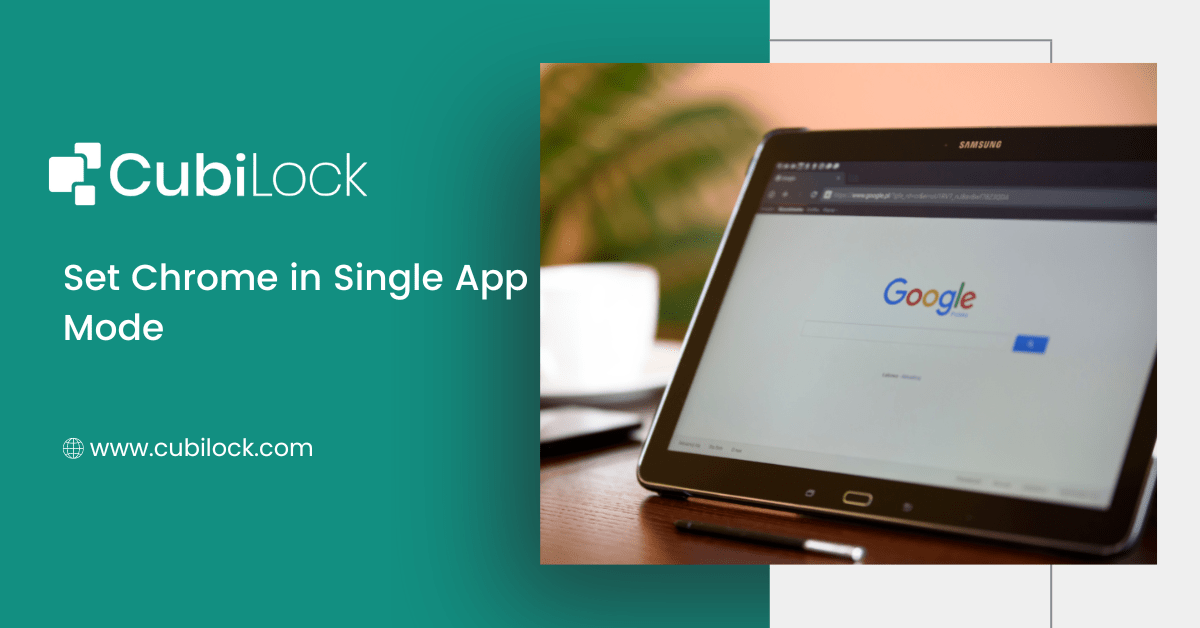
In today’s fast-paced business world, a distraction-free environment is highly uncommon. With so many things competing for our attention, mobile devices should be the last of them. Chrome single-app mode is an excellent business feature because it allows end-users to focus on a single task without being distracted. Businesses can prevent their end-users from tampering with device settings and accessing non-work-related apps or websites by running Chrome in single-app mode. This feature boosts productivity by ensuring that devices are only used for specific tasks and that they are not distracted by background noises.
Why Should You Pick Google Chrome?
Google Chrome has long been a business favorite and the browser of choice for the vast majority of internet users. Because of its speed and efficiency, it is the preferred browser in the workplace. It has a quick startup time and can handle multiple tabs and processes efficiently. With built-in security features, such as safe browsing and malware prevention, it is a secure choice for businesses to protect their data and networks. It also receives regular updates with the most recent security patches to deliver the latest app versions and keep users safe.
Chrome provides a plethora of customization options, such as themes, extensions, and settings, allowing users to tailor their browsing experience. It also integrates with many Google services, including Google search, Gmail, Google Drive, and Google Docs, providing cross-platform support and making it easier to access these services from within the browser.
What is Single App Mode?
CubiLock’s single app mode allows users to restrict their Android mobile device to a single app, in this case, the Chrome browser. This mode is especially useful for businesses or educational institutions that want to limit users’ access to other apps and features on their mobile devices while using Chrome. Once enabled, the device will only allow the user to access the Chrome browser and will not allow them to switch to other apps or features.
After configuring the device in single app kiosk mode, you can further whitelist URLS on your Google Chrome. IT administrators can simply compile a list of approved websites that are required for the device and grant users limited access to those. Website whitelisting prevents users from exploring and accessing unsafe websites, thereby avoiding any negative repercussions for the company and its customers. Although whitelisting may appear strict and rigid, it can help businesses keep their valuable data safe and secure, leaving no room for mistakes or accidents. CubiLock MDM supports both website whitelisting and blacklisting, and the choice is entirely dependent on the work purpose and needs of your business.
CubiLock MDM manages your employees’ internet habits and discourages them from engaging in unwanted activities such as gaming, streaming movies, making personal calls, scrolling social media, or sending text messages. Controlling peripheral device connectivity is also possible by blocking connections to unknown devices (E.g. WiFi networks, BlueTooth, speakers, printers, etc). You can disable the status bar, notification alerts, and hardware buttons such as the ringer, power button, and volume controls. The devices can be configured in full-screen mode, ensuring that end-users cannot exit the kiosk mode in any way and that your devices are compliant with security regulations.
How To Lock Mobile Devices Into Single App Mode Using CubiLock?
Following the simple steps below, Android devices can be locked into a single app mode from the unified CubiLock Dashboard:
- Step 1: Sign Up and Enroll your Android Devices OR Sign In to your CubiLock Portal.
- Step 2: Select Device Management > Create New Profile OR Select an existing Device Profile.
- Step 3:Click on Edit > Applications.
- Step 4: Navigate to +Choose Application.
- Step 5: Select the Google Chrome application.
- Step 6: Click on Install Type > Kiosk from the drop-down menu as shown in the screenshot below.
- Step 7: Save to apply changes.
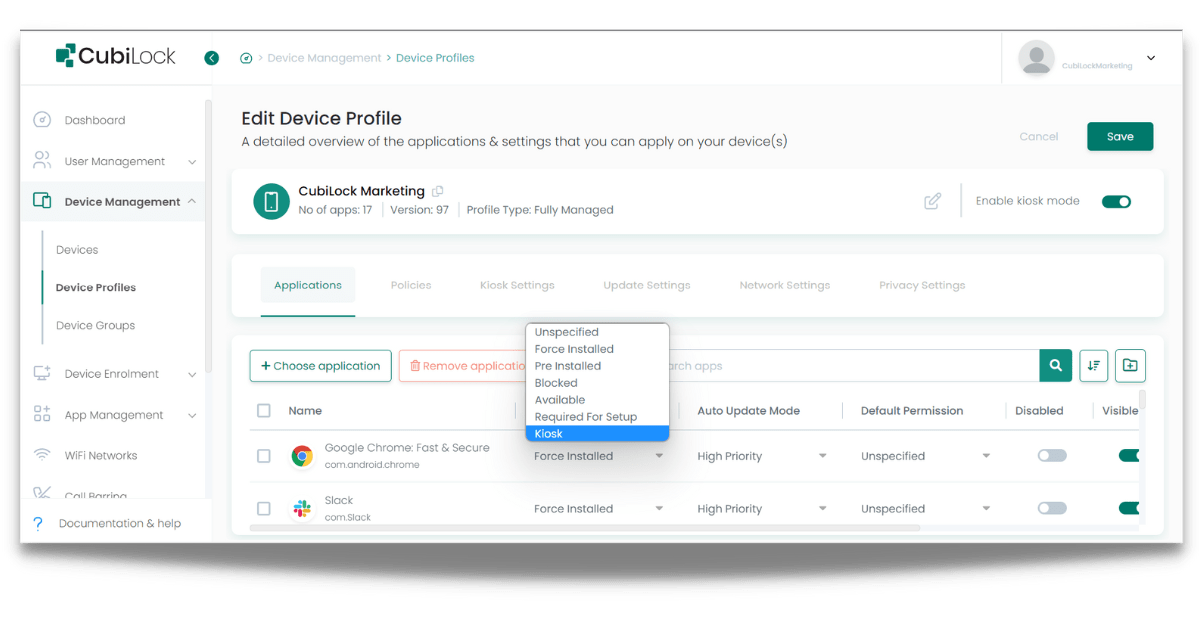
Chrome Single App Kiosk Mode: Use Cases
mPOS
For businesses that require a portable and flexible payment processing solution, mobile devices outfitted with mPOS systems are becoming increasingly popular. Without the need for a traditional point-of-sale (POS) system, these mobile kiosks allow businesses to accept card payments and process transactions anywhere, at any time. Chrome kiosk mode ensures that the end user is unable to exit kiosk mode and the device runs POS application only. You can disable all incoming/outgoing calls, notifications as well as physical buttons, making the device purpose specific.
Self-Service Kiosks
Self-service kiosks are customer-facing devices that allow users to interact with a business’s goods or offerings without requiring any human interaction or assistance. They’re popular in industries like retail, hospitality, and healthcare. Self-service kiosks include self-checkout kiosks in grocery stores, ticketing kiosks in movie theatres, order placement kiosks in restaurants, and hospital check-in kiosks. Businesses use websites or web-based applications to run these kiosks. In chrome kiosk mode, you can whitelist the websites or applications that are essential to run the kiosk and restrict access to the rest. The limited functionality in your mobile devices streamlines operations offers faster services and overall improves your customer’s experience. You can even transform tablets into Android kiosk mode as well!
Digital Signages
Chrome kiosk mode allows you to turn your regular Android devices into digital signages and product catalogs without any heavy hardware investments or complicated software. It lets you implement digital signages that can showcase advertisements, product details, shop finders, catalogs, information, and web-based interactive displays right from your tablets and smartphones by setting Chrome in kiosk browser lockdown mode.
Feedback/ Survey Forms
With Chrome in single-app mode, you can whitelist Google Docs to create feedback forms or surveys which can be used to collect real-time information from customers. Chrome makes it simple to collect and manage data, without the need to waste time and resources on paperwork, cold-calling customers, or sending out emails.
Classroom Tablets
In virtual or physical classrooms, chrome single app mode can be an incredible tool to establish focus and concentration among students. The admins can whitelist academic websites and secure the devices from cybersecurity risks like phishing, malware, viruses, and hacking. Students can use chrome for immersive learning, assignments, presentations, quizzes, and examinations.
In conclusion, kiosks have become an essential part of many businesses, offering convenient and efficient solutions to a wide range of customer needs. Chrome kiosks are cost-effective and versatile tools for modern business to elevate their operations and simultaneously improve efficiency, customer engagement, and customer satisfaction. CubiLock MDM enables you to transform your generic Android devices into multi-functional kiosks that meet the specific needs of your business. So, leverage the power of single app mode and website whitelisting features today.

Apart from being a true sushi enthusiast, Sadichha (Aka SSH) is a content writer and blogger at CubiLock. She is passionate to enchant everything boring and nitty gritty about technology through her writings for her readers to enjoy and learn from at the same time. When she is not at her desk crafting content, you can catch her occupied with her cat.





